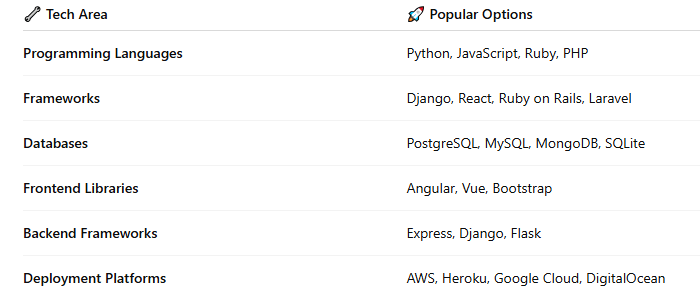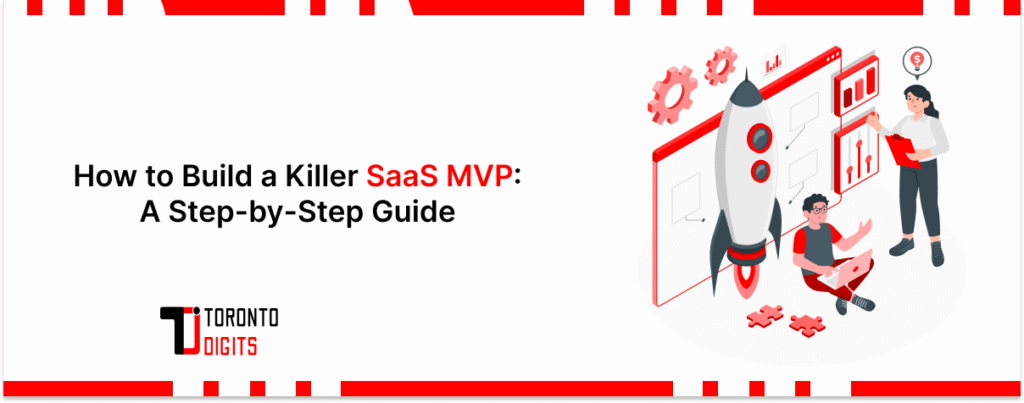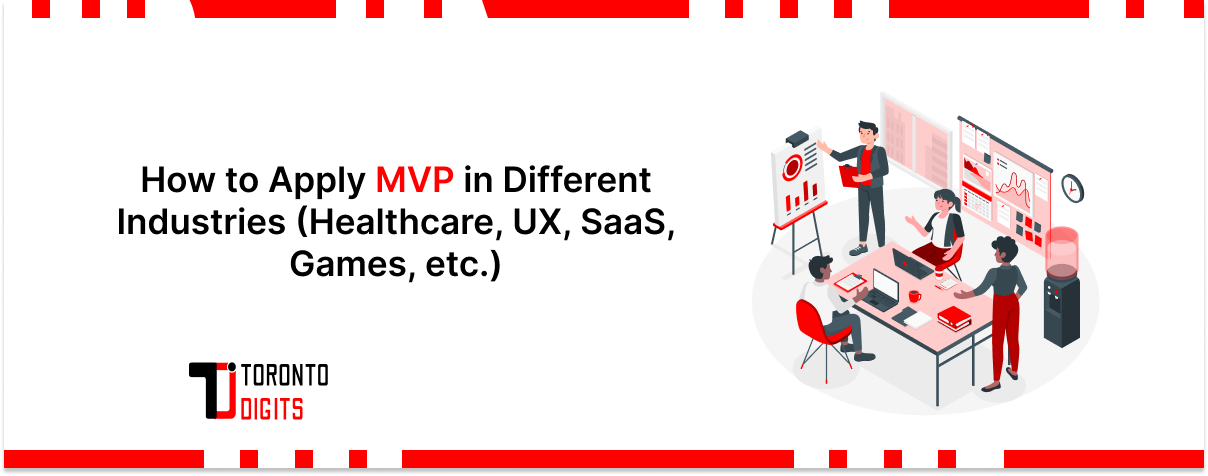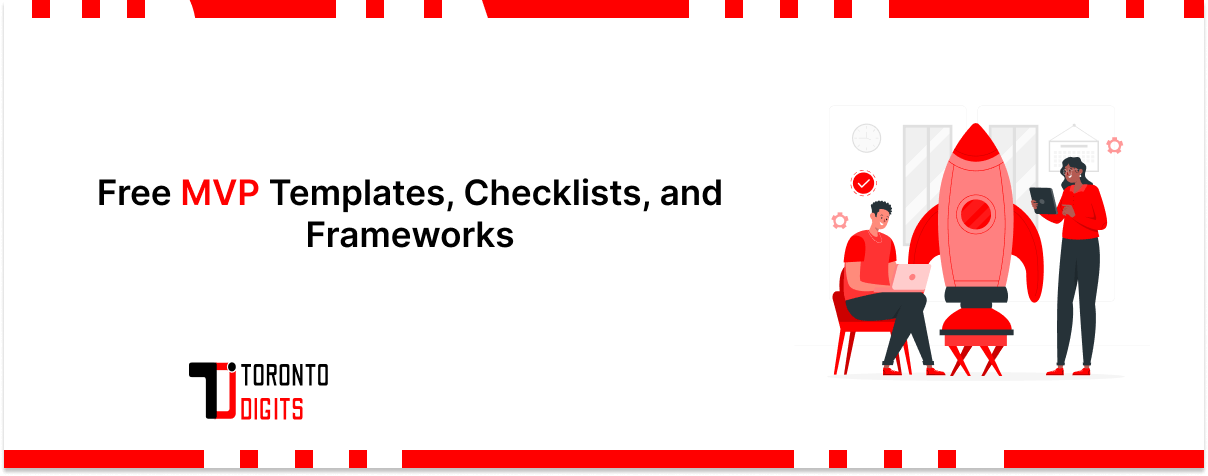It’s not just about having a great idea — it’s about how you bring it to life.
If you’re launching a SaaS startup, jumping straight into full-scale development can be risky and expensive. A smarter move? Start small with a Minimum Viable Product (MVP).
An MVP is like your product’s first test run. It includes just the core features needed to see if your idea actually solves a problem for real users. It’s a way to get feedback, make improvements, and avoid wasting time or money on something people might not even need.
In this guide, we’ll walk you through the key steps to building a successful SaaS MVP. Whether you’re going solo or teaming up with an MVP development partner, this roadmap will help you turn your vision into a working product that’s ready for the market.
What is a SaaS MVP?
Think of a SaaS MVP as the bare bones of your software. Just the essentials, yet fully functional and ready to wow users.
Market Research & Idea Validation
Before you start building your SaaS MVP, take a step back — it’s time to lay a solid foundation. A great idea is exciting, but how do you know it will actually work in the real world? That’s where market research and idea validation come in.
Start by figuring out who you’re building for. Get clear on your target audience and dig into their pain points. What problems are they facing? What keeps them frustrated or stuck?
Next, dive into market research. Check if there’s real demand for your solution. Are people actively looking for a fix to the problem your SaaS solves? This is exactly why building an MVP makes sense — it lets you test the waters before diving in.
Don’t rely on gut feeling alone. Here’s how to validate your idea with real-world input:
- Run surveys to gather honest feedback
- Have one-on-one conversations for deeper insights
- Analyze competitors — is someone already doing this? If so, what can you do differently or better?
This stage might not feel as exciting as building, but it’s what separates smart startups from the rest. Get it right, and you’re already ahead.
How to build a SaaS MVP?
Identify your audience’s needs, nail down key features, and craft a solution. A SaaS MVP development company can be your MVP sherpa.
Defining the Core Features
Once you’ve confirmed there’s real demand for your SaaS idea, it’s time to zoom in on what your MVP should actually do. Remember, your MVP isn’t meant to be a full-fledged product — it’s the core version that solves your users’ most pressing problem.
Start by identifying the must-have features that matter most to your target audience. Think along the lines of:
- Easy-to-use dashboards
- Smooth data integration
- Strong, reliable security
With a list of potential features in hand, it’s time to prioritize. Focus on what brings the most value with the least complexity. A well-chosen MVP tech stack can help speed things up and keep you on track.
Keeping your MVP focused isn’t about cutting corners — it’s about building smarter. When you stick to the essentials, you launch faster, test sooner, and get real feedback quicker.
If you’re planning to launch a SaaS product, MVP development isn’t optional — it’s your launchpad. And if you’re looking for a reliable partner to help you build it right, TorontoDigits is ready to jump in. Because when done right, an MVP isn’t just a starting point — it’s your product’s first big step toward success.
Creating a Wireframe and Design
Ready to jump into building your SaaS MVP? Hold up — before any coding begins, you need a clear plan. That’s where wireframes and design come in. Think of them as the blueprint for your product — they help you visualize what you’re building before you actually build it.
Wireframes lay out how users will move through your software. It’s like drawing a map before taking a trip — you wouldn’t build a house without a floor plan, and the same logic applies to software. Wireframes give your team (and even investors) a clear picture of how everything will work.
But great UX isn’t just about flow — it’s also about feel. Your MVP design should be clean, simple, and aligned with your brand. Users don’t want to guess how to use your product. They want something intuitive, easy to navigate, and visually consistent with your brand’s personality.
And don’t forget — your users will access your SaaS from all kinds of devices: phones, tablets, desktops. That means your design needs to be responsive so it looks and works great everywhere.
In short: plan first, design smart, and build something that users will love at first click.
How long does it take to craft a SaaS MVP?
Anywhere from weeks to months, depending on feature complexity. Focus on speed and value, and you’ll hit the sweet spot.
Selecting the Right Technology Stack
Okay, let’s get a little techy, but not too much! When it comes to building an MVP for startups, the technology behind the scenes matters. Imagine trying to run a marathon in flip-flops.
Sounds tough, right?
The same logic applies to your MVP tech stack. You need the right tools for the job.

Alright, while selecting your tech, you have some big considerations for scalability, security, and integration capabilities. MVP speed development is essential, but so is planning for future growth. Think about your long-term goals. Will you need to integrate with other platforms or tools? And remember, security isn’t a luxury—it’s a necessity.
Now, where should your MVP live? The cloud, of course! The benefits of cloud hosting are endless, from easy scalability to top-notch security. But it’s not just about picking any cloud service; it’s about choosing the right service provider. Think about what you need: storage, processing power, or maybe some fancy AI features. Dive deep into your MVP features and align them with a hosting provider that fits the bill.
Development and Iteration
Ever heard the phrase, “Rome wasn’t built in a day”? Neither is a killer MVP for SaaS startups. It’s a dance of development and iteration, ensuring every step leads to a product your users will love.
So, where to start?
Implementing the core features is essential. But here’s a golden nugget: use an agile development approach.
Why?
It allows flexibility. If a specific feature doesn’t quite hit the mark, pivot! And if you find a surprise feature users love, double down on it. An agile approach is like GPS for MVP development for startups.
But wait, there’s more! Ever tried working on a group project where everyone has their own version of the project?
Chaos, right?
Enter version control and continuous integration. It keeps your codebase organized and ensures every team member is on the same page. Plus, it makes life a tad bit easier.
Now, the secret solution: feedback. Imagine building what you think is the ultimate SaaS product, only to find out your users don’t get it.
Ouch!
That’s why feedback loops and user testing are paramount. It’s all about MVP validation.
Test, iterate, and then test some more. Listen to the people, and they’ll guide you to success.
Performance Optimization
Alright, your MVP is up and running. High-five! 🖐 But hold on, we’re not done. Speed and performance?
They’re not just cool buzzwords; they’re what makes or breaks your SaaS product.
First up, identifying potential bottlenecks. These are like traffic jams in your code, slowing things down. Once you spot them, dive deep into optimizing the codebase. Think of it as decluttering your digital space.
Next, let’s play pretend. Testing your SaaS MVP’s performance under different loads and conditions helps you see how it behaves in the wild. It’s like preparing for every possible weather condition before a big race.
And now, the techy stuff!
Here are some strategies to improve speed and reduce response times:
Caching: Store frequently used data to serve it up faster.
Load Balancers: Distribute user requests across multiple servers, avoiding overloading a single server.
Content Delivery Networks (CDN): Place your content in various locations globally, so it’s closer to your users, speeding up access.
Database Optimization: Streamline your queries and use indexing wisely.
Compression: Smaller file sizes mean faster load times. Zip ’em up!
Security and Data Protection
Picture this: you’ve poured your heart and soul into building an MVP for a SaaS startup, only to watch it crumble due to a security breach. Sounds like a nightmare, right?
Security and data protection aren’t just checkboxes on your to-do list; they’re the very foundation of your MVP.
In our digital world, there are rules – important ones. Complying with industry standards and regulations such as GDPR and CCPA isn’t just about avoiding fines; it’s about building trust. Your users need to know their data is treated with respect, like the precious cargo it is.
Now, let’s chat about worst-case scenarios. They’re no fun to think about, but essential. That’s why you’ve got to have a plan. Data backup and disaster recovery planning ensure that when the unexpected happens, you’re prepared. Think of it like having a spare tyre in your car; you hope you never need it, but boy, are you glad it’s there when you do!
Deployment and Monitoring
Okay, it’s showtime! You’ve built, tweaked, and tested. Now it’s time to unveil your masterpiece to the world. Deploying the SaaS MVP to a production environment is like opening night for a Broadway show. The spotlight’s on, and it’s your time to shine.
But hold on a second. Once your MVP is out in the wild, you’ve got to keep an eye on it. Setting up monitoring tools gives you insight into performance, user engagement, and error rates. It’s like having a personal trainer for your MVP, helping it stay in top shape.
Last but not least, let’s talk about growth. MVPs aren’t static; they evolve. Continuous improvement through iterative updates based on real-world usage is the name of the game. It’s all about MVP validation. Listen to your users, understand their needs, and pivot when necessary.
User Onboarding and Support
Imagine stepping into a new city without a map or guide.
Overwhelming, isn’t it?
The same can be said for users diving into your MVP for a SaaS startup for the first time. It’s all about that first impression, and you’ve got one shot to make it count.
Efficient onboarding – a smooth onboarding process is like giving your users a personalized tour of your digital city. It’s showing them the sights, ensuring they feel comfortable, and setting them up for success.
But the journey doesn’t end there. Users will have questions, and that’s a good thing! Providing excellent customer support is essential. Remember, it’s not just about solving problems; it’s about building trust. And let’s not forget about feedback. It’s gold! Every piece of feedback, whether it’s praise or constructive criticism, is an opportunity for MVP validation and growth.
Now, here’s the cherry on top: community.
Building a community isn’t just about having a bunch of users; it’s about fostering connections, sharing stories, and growing together. And when your users sing your praises, use them as testimonials! They’re like word-of-mouth marketing on steroids.
Marketing & Launch
Your MVP is built, polished, and ready to roll. The big question now is: how do you get people to notice it?
That’s where a smart marketing strategy steps in — not just to make noise, but to make an impact.
Here’s your MVP marketing toolkit:
| Marketing Area | What to Use |
| Content Creation | Blog posts, eBooks, and helpful webinars |
| Social Media | Scheduled posts, engaging stories, targeted ads |
| Influencer Outreach | Partner with YouTubers or industry thought leaders |
| Email Campaigns | Drip emails, welcome series, value-packed newsletters |
| SEO | Keyword-rich content, backlinks, and on-page optimization |
| Paid Ads | Google Ads, Facebook Ads, LinkedIn campaigns |
Leveraging content marketing isn’t just about pushing your product; it’s about providing value. From informative blog posts to engaging webinars, become the go-to resource in your niche. Pair that with a robust social media strategy to engage with your audience, and you’re on fire!
Oh, and influencers?
They’re not just for fashion and beauty.
Influencer partnerships can skyrocket your SaaS product’s visibility, lending credibility and reaching new audiences. But here’s the million-dollar question: Is it working?
Measuring the success of your launch isn’t just about vanity metrics. Dive deep, understand your users, and continuously refine your marketing efforts. It’s the dance of MVP speed development and adaptation.
Final Thoughts
An MVP isn’t just a smaller version of your product—it’s the core of your SaaS vision. It’s what helps you stand out, catch investor attention, and prove your idea has real potential. When built the right way, your MVP becomes the launchpad that takes your SaaS to the next level.
Of course, building an MVP isn’t always easy. There are a lot of moving parts, and it’s totally normal to feel a bit overwhelmed.
But you’re not alone.
At TorontoDigits, we’re here to help. Why not hop on a quick call with us? We offer a free 1-hour consultation to talk through your idea and show you how we can bring it to life, step by step.
Let’s turn your vision into something real and amazing.
Wishing you all the best on your SaaS journey!




